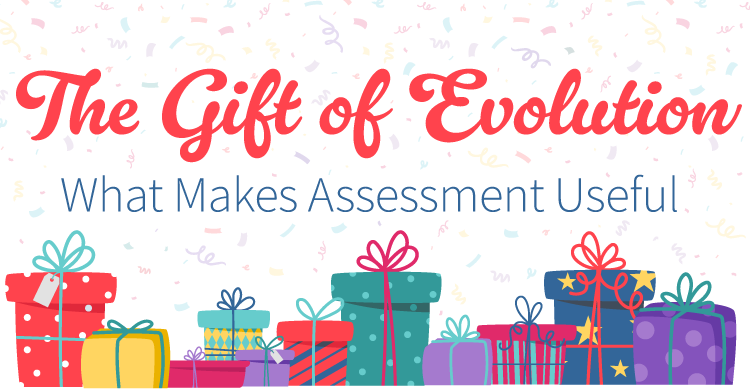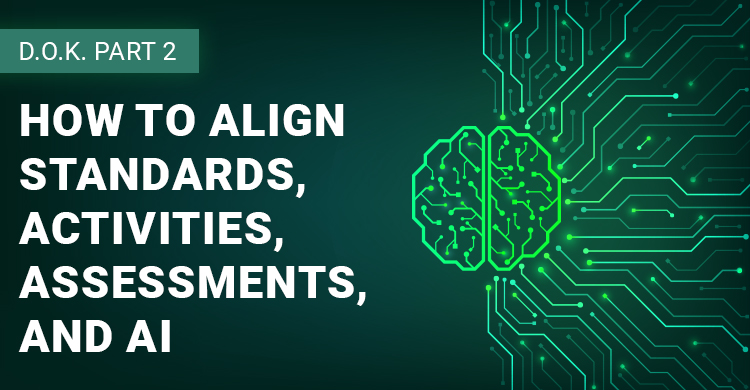This is the tenth post in a series on student-led, small-group discussions. To read the other posts, see “Small Groups, Big Discussions.” The series explores the challenges to effective small-group discussions and how to address them. The content is connected to the book Deep Discourse.
If you have incorporated the ideas from my past blog posts into your instructional practices and still find your students’ discussions lack substance, it may be due to the feedback they are receiving. After years of research, Hattie (2008) revealed that feedback was among the most powerful influences on achievement and states that students have a greater chance of achieving learning targets when teachers provide ongoing feedback about their progress.
How do we incorporate effective feedback when we want to address students’ communication and group membership skills during student-led discussions? What does effective feedback to advance individual and group skills look and sound like?
Effective Discussion Feedback
When given correctly, feedback guides the information about our students’ attainment of the learning target or the direction they need to reach the goal of the lesson. Feedback sends a message to the student that the instructor cares about the learning taking place. It also allows the student to become more engaged and involved in the classroom. The best feedback references the learning target, or a specific concept or skill, and tells students where they stand in relation to mastery of that target, concept, or skill.
Laying the Foundation for Feedback
Explicit instruction and modeling
Without providing guidance through whole-group instruction, students will not purposefully and incrementally develop their communication and group membership skills.
It’s during this whole-group instruction that we talk about the indicators that students will be working on in their discussions and we look for during our observations. These attributes, commonly called look fors, should align with the learning target of the lesson and be developed with students.
Creating look fors and observing
After explicit instruction showing video examples of small-group discussions focused on balancing speaking opportunities, we need to identify the attributes that would be present when this balance exists within a group. This list is best developed by the whole class of students, so they buy into the process and internalize the concepts they apply later in their small-group discussions. These attributes can be generated on a Smart Board or on an anchor chart and posted for students to reference when they need the support. We will also use these attributes as we observe our students conversing in their groups.
One attribute that might be determined if our focus is on creating a balance of speaking and listening time among group members might be that everyone gets a chance to speak. A note for this attribute that the teacher might write down as she observes a small group is: Zain, Rahma, Rory, Alyssa, Arthur each speak. I didn’t hear from Maddie during this short two-minute observation.
After observing several small groups and writing two or three specific examples from each group for each attribute, the teacher analyzes the data to determine common patterns across all groups. As it relates to this attribute, the teacher notes that all students said something.
Another attribute might be that group members bring someone into the discussion who hasn’t spoken for a while. Think about other attributes that might help students as they develop the skill of balancing speaking and listening time among group members. When I did this activity with a group of educators, they came up with the look fors listed in the following chart.
| Look For | Evidence |
| Everyone speaks | . |
| Brings someone into discussion who hasn’t spoken for a while |
|
| Contributes relevant points/ideas that add value | |
| Uses language to demonstrate listening (paraphrases, asks clarifying questions…) |
|
| Asks questions that invite others to respond |
After generating the look-for attributes, students form groups and begin their discussions. Our role as educators is to observe groups using the look fors, take notes, and provide feedback. During the observation, it is important to capture specific examples of each attribute, to provide explicit feedback to students.
Three Levels of Feedback
Another important ingredient in getting all students to speak and contribute in group discussions is to provide whole-group, small-group, and individual feedback. We know that effective feedback relates to the learning goal, points out strengths from individuals or groups, is descriptive rather than evaluative, offers next steps for improvement, and allows opportunities to use it. Statements like “Good job!” or “I liked the way you…” don’t help, because the first statement is too general and doesn’t give information about strengths and growth areas. The second statement is evaluative. Let’s look at some examples.
-
Whole-group feedback
For whole-group feedback, you could say, “As I listened to several group discussions today, I noted that you are doing a much better job of balancing speaking time. I heard one person say ‘Arthur, you haven’t had a chance to speak for a while. Do you have something to add to this point?’ By inviting members to share, it sometimes helps stimulate a quiet person into speaking, because he doesn’t have to compete for speaking time, and it lets him know his contributions matter.”
-
Feedback for small groups
Asking students to think about their work before receiving feedback aligns with a student-centered environment, where you guide your students into becoming self-directed learners. Peer feedback gives students a voice. Their role is vital in one another’s learning. Therefore, one way to begin the feedback cycle is to ask, “How do you think you did on your learning target today?”
After students share, it’s important to offer specific examples of things you observed as well. This sharing from both students and the teacher demonstrates a partnership in the students’ learning development and again demonstrates that the teacher values their contributions. An example of the feedback we could give to a small group (such as the one shown in this video) is, “Rahma used language to demonstrate listening when she stated, ‘I hear that you think the way Romeo felt about Juliet was because of love at first sight, but Romeo was a romantic. It was more of an infatuation rather than love…’ Someone later states, ‘Arthur, you bring up that Juliet was being forced by her father to marry another man.’ Another student brings others into the discussion by following up with the question, ‘Was it more of a rebellion on Juliet’s end?’”
-
Individual feedback
By providing data when offering individual feedback, we reduce the evaluative stance. We might begin by stating something like, “Isabella, I noticed you spoke about six times during the ten minutes I observed your group; whereas, other students spoke one or two times.” Then it’s helpful to reinforce that you want her to continue to talk during discussions. But other students also need the opportunity to share their ideas and perspectives. You might go on by offering choices of ways to increase the time others have to speak while honoring her contributions. Some options might include:
- Pose questions rather than share more thoughts and ideas. This option still gives her the opportunity to talk but draws others into the discussion.
- Wait to offer your ideas until at least one other person has shared his/hers.
- Keep a tally of the number of times you speak as compared to others in the group. Invite others to contribute when you notice your speaking time is becoming disproportionate with your peers’.
After providing some options, follow up with a question that can be built into a personal goal, and it allows the student to be the decision-maker in her growth. “Does one of these ideas appeal to you; or do you have an idea of your own that you might try?” Often, students don’t know how to improve, or they may not know that listening and asking questions to bring others into the discussion is often as empowering and rewarding as speaking frequently.
Specific, descriptive feedback is necessary for improvement and success. How teachers provide suggestions for improvement is critical in developing students’ communication and group membership skills. Teachers who combine strong subject knowledge with effective feedback can offer students rich, focused information about their learning and how to improve it. Students who are clear about their learning can monitor their progress and seek feedback to improve their understanding.
Next time, I answer questions about helping younger students become more self-directed in their discussions. Look for the blog post on February 26.
Sandi Novak, an education consultant, has served as an assistant superintendent, principal, curriculum and professional development director, and teacher. She has authored three books: Deep Discourse: A Framework for Cultivating Student-Led Discussions (Solution Tree, 2016), Literacy Unleashed (ASCD, 2016), and Student-Led Discussions (ASCD, 2014). She also authored the Online ASCD PD Course, “Building a Schoolwide Independent Reading Culture,” as well as journal articles and blogs. Visit Sandi’s website, join her professional LinkedIn community, or send her a tweet @snovak91335.
References:
Hattie, J. (2008). Visible learning: A synthesis of over 800 meta-analyses relating to achievement. New York: Routledge.
Novak, S. & Slattery C. (2016). Deep discourse: A framework for cultivating student-led discussions. Bloomington, IN: Solution Tree.







